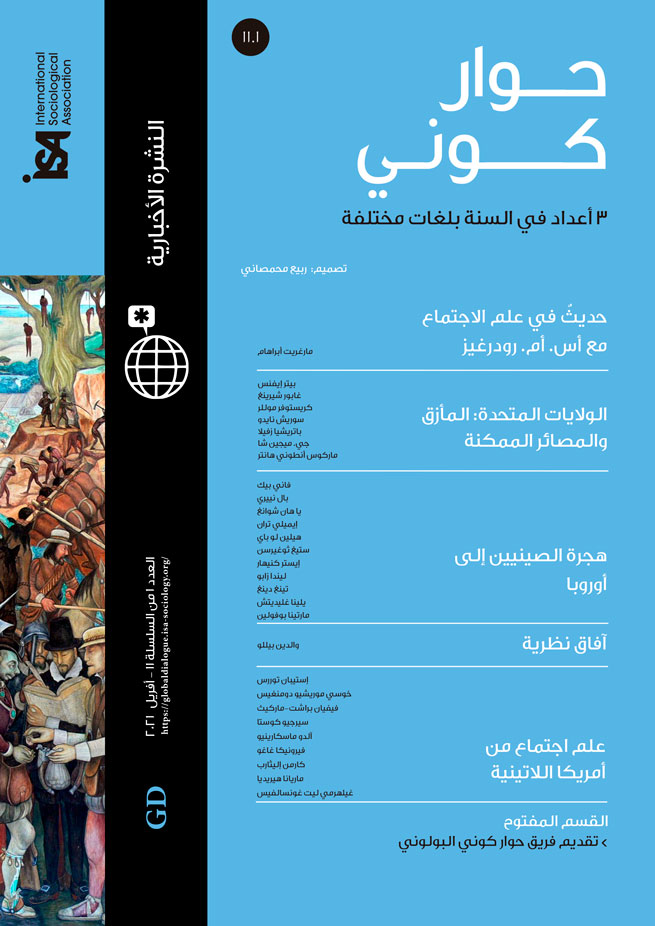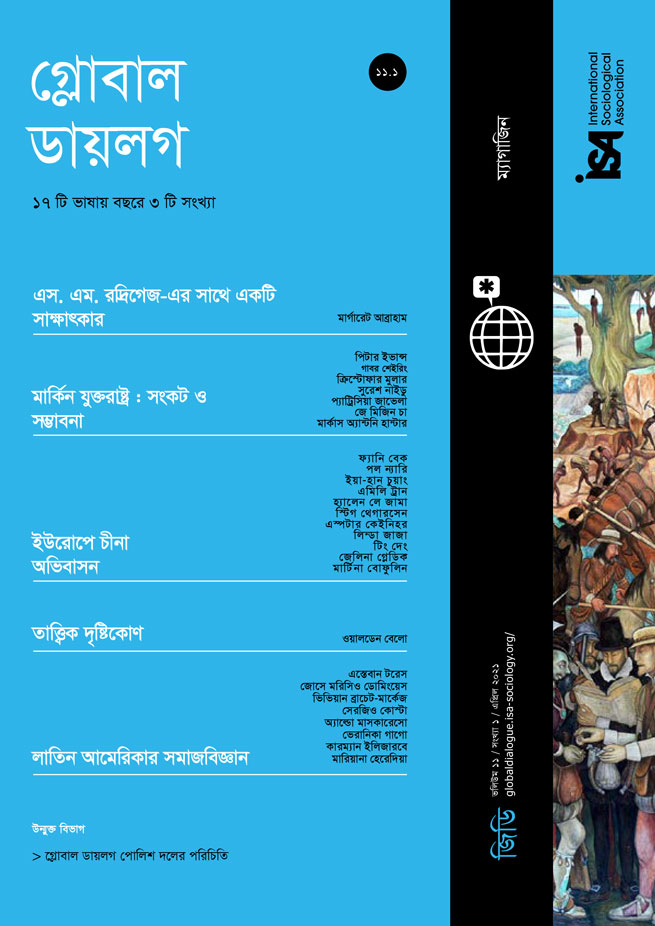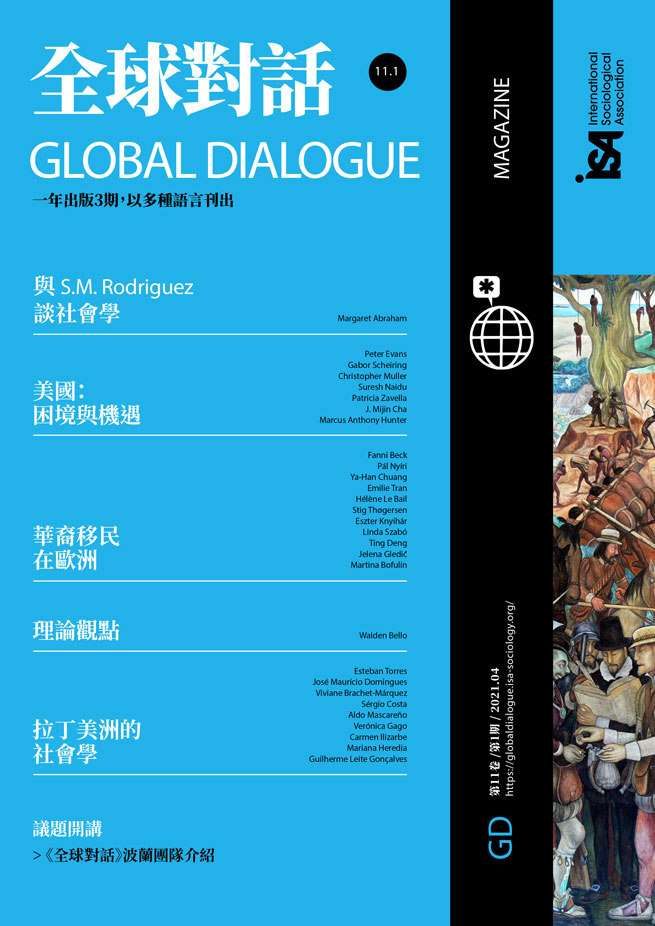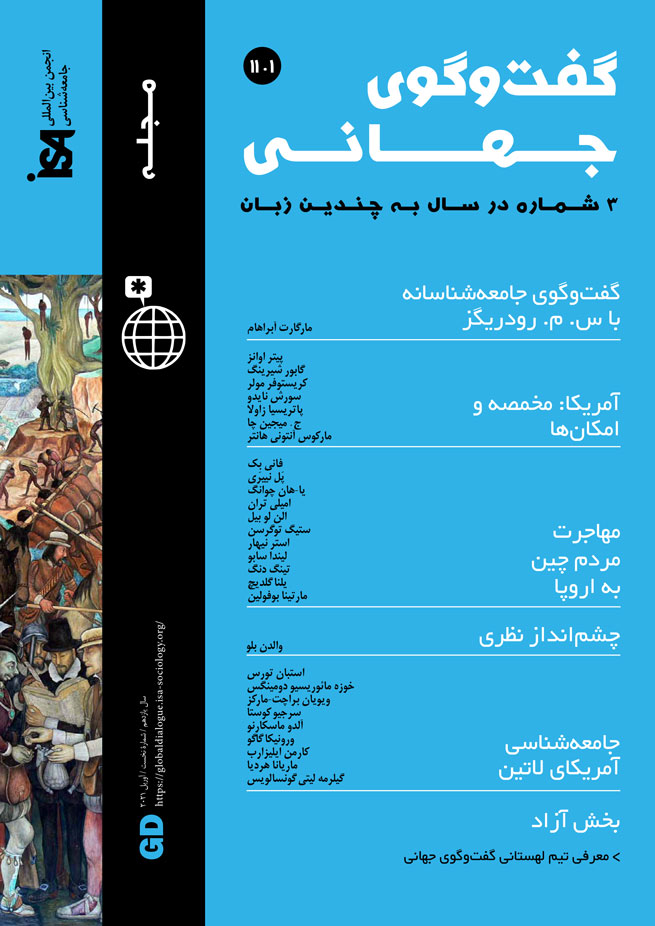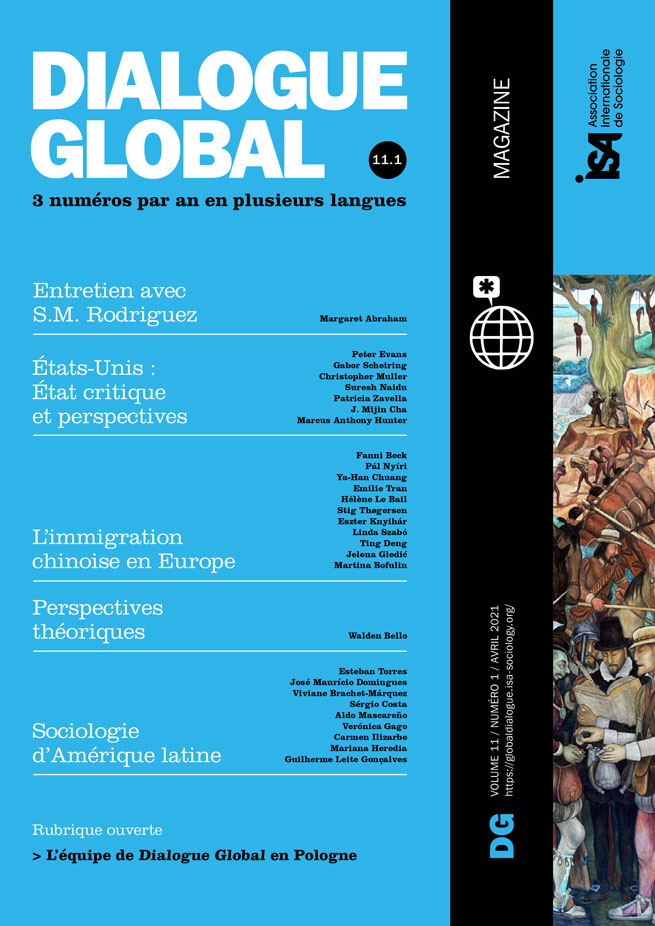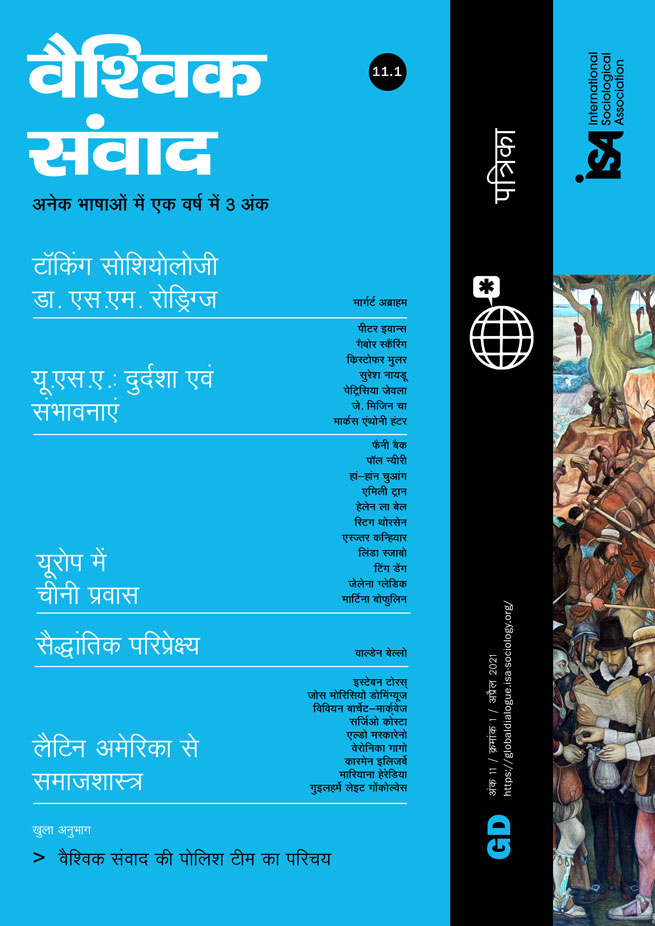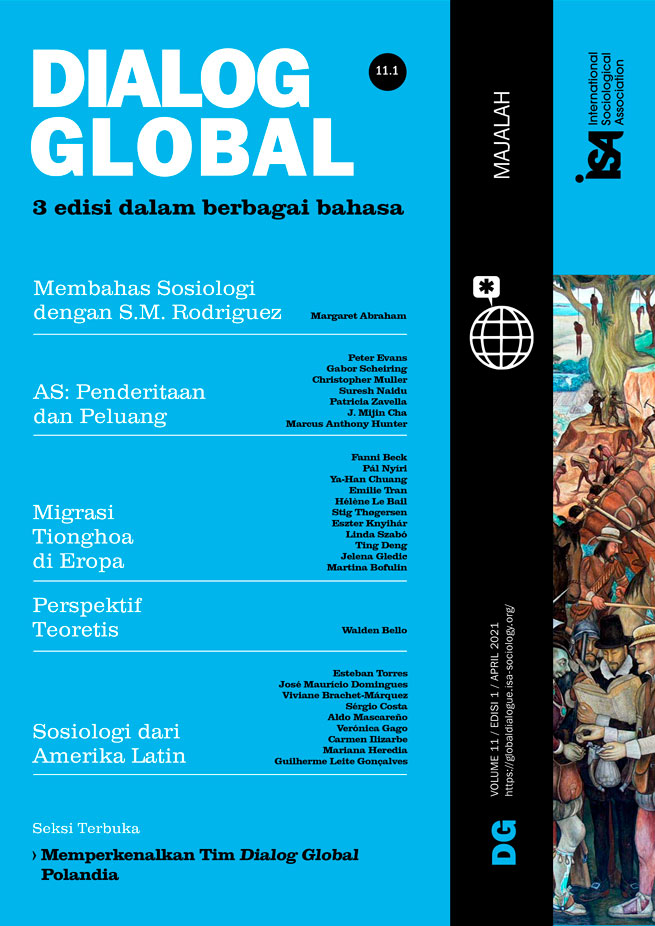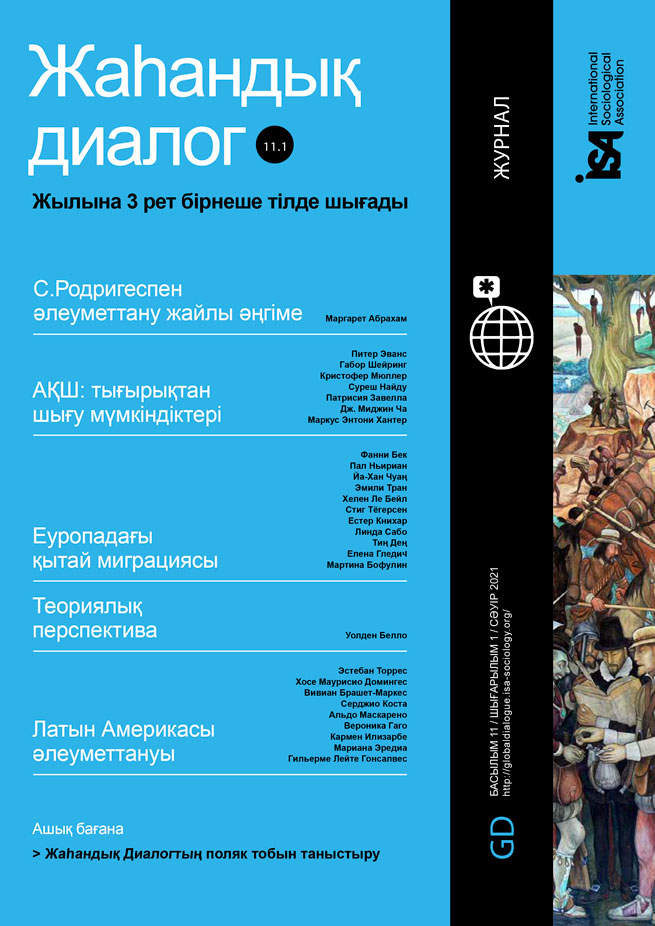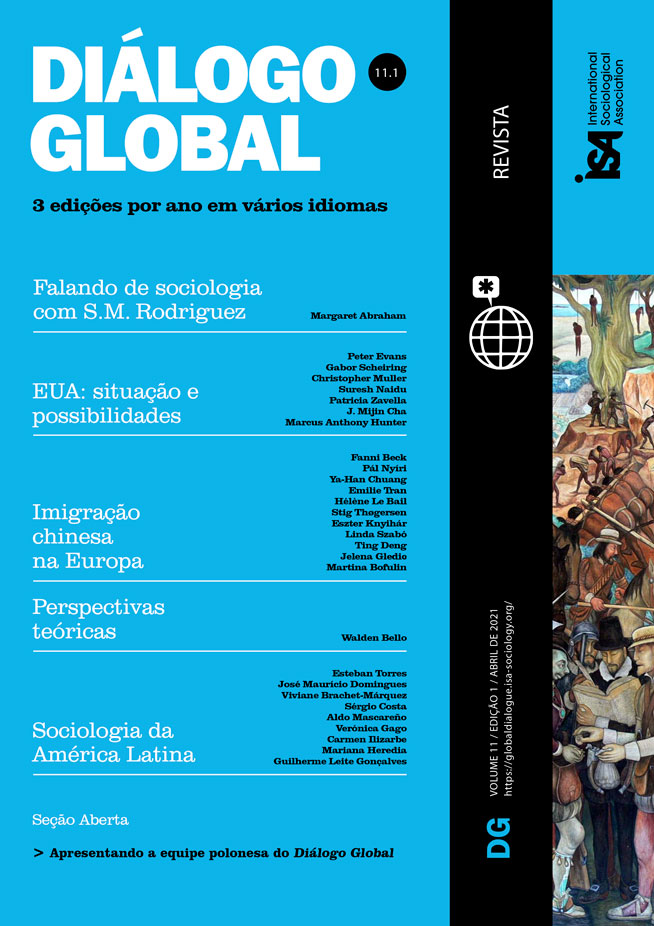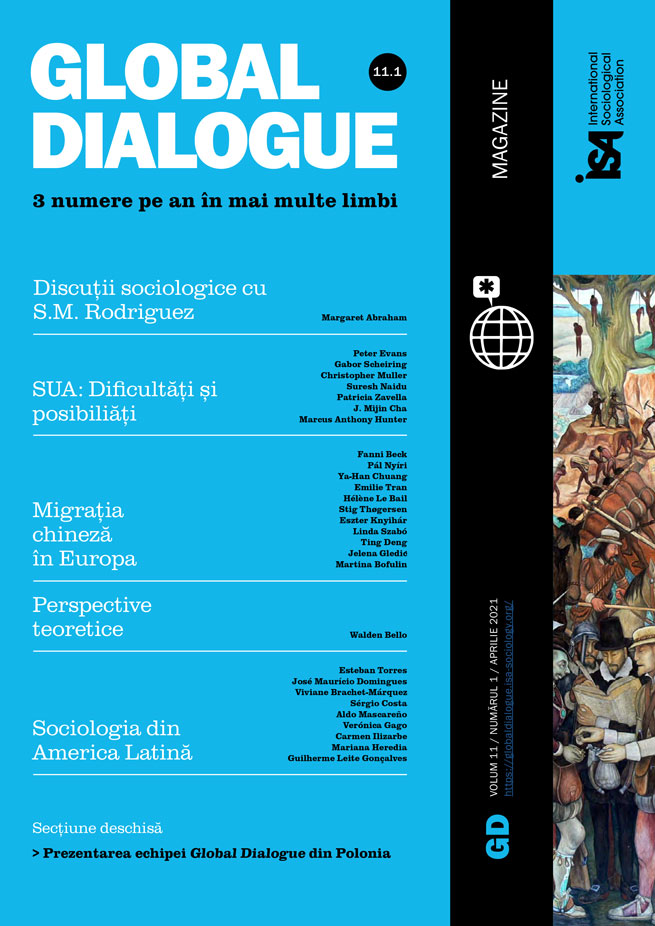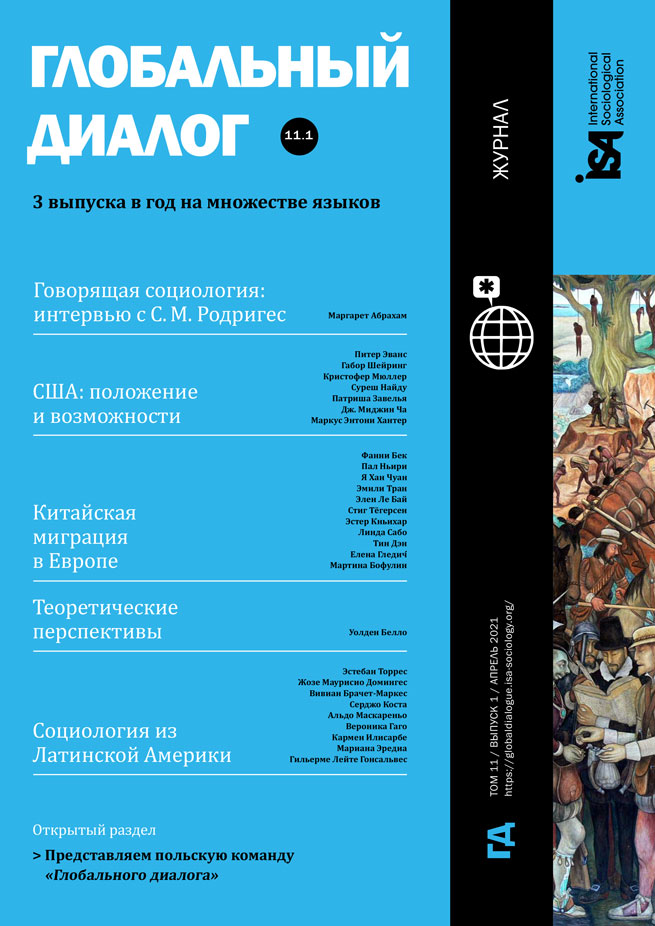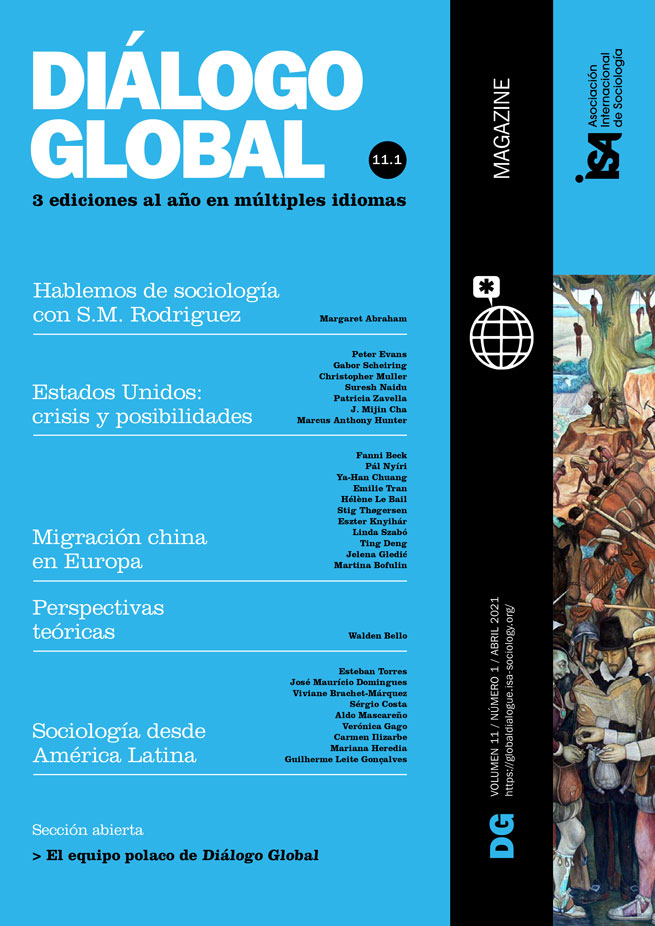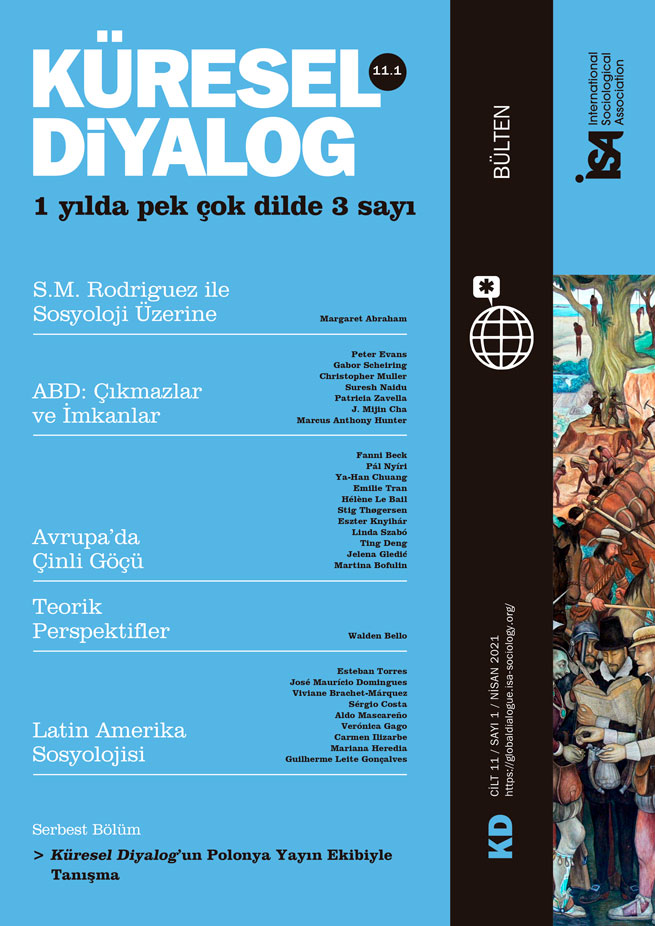The Brilliance of BLM: An Interview with Dr. S.M. Rodriguez
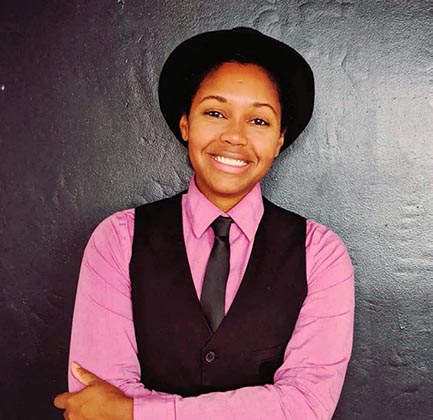
February 21, 2021
Dr. S.M. Rodriguez (pronouns: they/their) is Assistant Professor of Criminology and Director, LGBTQ+ Studies at Hofstra University, Department of Sociology. They are the author of the book, The Economies of Queer Inclusion: Transnational Organizing for LGBTI Rights in Uganda (2019), in which Rodriguez provides a nuanced analysis of the implications of transnational organizing and international funding for local activism.Their publications include “Carceral Protectionism and the Perpetually (In)Vulnerable”; “Invisibility Matters: Queer African Organizing and Visibility Management in a Transnational Age”; “Queer Abolitionist Alternatives to Criminalising Hate Violence” (forthcoming); and “Not Behind Bars: The Rippling Effect of Carceral Habitus and Corrective Violence on the Family and Community Life of Prison Guards” (forthcoming). Dr. Rodriguez is working on two incredibly innovative book projects: Abolition in the Academy: Scholar-Activism and the Movement for Penal Abolition and Marked for Removal: Perpetual Coloniality, Gentrification, and Queer Abolitionist Praxis in New York City. After years of community organizing with the Safe OUTside the System Collective, Rodriguez joined the Board of Directors of the Audre Lorde Project, the largest organization for and of queer people of color in the United States. Their work has been supported by various grants, awards, and fellowships, including the American Association of University Women (AAUW) Postdoctoral Fellowship (2020-21) for Abolition in the Academy and the American Sociological Association’s Minority Fellowship Program (2014-15).
Here, Dr. Rodriguez is interviewed by Margaret Abraham, Past President of the International Sociological Association and Senior Vice Provost and the Harry H. Wachtel Distinguished Professor at Hofstra University.
MA: What is Black Lives Matter?
SM: When people reference Black Lives Matter, they typically refer to one of three different, but interrelated, things. It’s firstly, a single, global organization with multiple chapters in the US, UK, and Canada that began in 2013. The key goals of the movement are to combat white supremacy, end state violence against people of African descent, and build the communal power necessary to sustain an anti-racist society. Secondly, BLM is a slogan meant to manifest itself into a reality for African peoples around the world: we exist, we matter. Finally, and perhaps most often, people mean the Movement for Black Lives (M4BL), which is an umbrella organization, a coalition of many aligned, racial justice organizations, most of which have existed for far longer than BLM. By that, I point to the tendency of the media, which immediately labels all anti-police brutality protests a “Black Lives Matter” event, regardless of the actual affiliations of the organizers or participants.
The brilliance of BLM is that, as a catchphrase that all anti-racists can affirm, the sentiment is able to replicate faster than viable chapters can form. Black Lives Matter is the millennial Black is Beautiful, or Black Power: not so much a centralized movement as a belief system, a prolonged cry, acollective invocation.
MA: What are some of the continuities and changes that you see between past Black movements and the current BLM movement? What are the strategies for disruptions that have challenged the status quo?
SM: There is a long and righteous history of community organizing and mutual aid in the US, by those who have existed in the margins of the state’s social services. Mutual aid requires resource sharing and reimagining resources and responsibility as an integral part of communal relations, rather than state-to-citizen relationality. Black movements have historically made demands of the state, but they have almost never imagined the state as the “be-all, end-all.” This includes the Black Panther Party’s 10 Point Program’s demand for reparations for slavery and genocide while imagining the community-led distribution of such resources. The Black Lives Matter movement similarly demands reparations and an end to various harms but doesn’t want that distributive work to fall within the purview of the state. W.E.B. Du Bois demonstrated the state’s limitations as he wrote on the Freedmen’s Bureau in The Souls of Black Folk. A federal institution set up specifically for the protection of Black American freedom and pursuit of paid labor in the 1870s, the Bureau quickly folded on the task because it was not committed enough to stand up to white supremacist violence (particularly, the Ku Klux Klan) and white supremacist legislative initiatives that criminalized Black life.
The historical continuities are abundant: the demands of safety, dignity, and freedom from political repression; the presence of Black women and LGBT leadership; and the presence of brutal policing, state repression, racist counter-movements, and white indemnity/impunity. The changes are also valuable. We see in certain cities, particularly in the Midwest, that often many protestors in BLM marches are white allies. Historically, these areas may just not have had much direct action. We also see the clear victimization of such white protestors by the militarized police forces and by white supremacist counter-protestors, who have actually killed white BLM allies! In the Freedom Rides, white (many Jewish) activists were beaten for joining the Civil Rights Movement – so that aspect isn’t so different – but I’m unaware of any time in our history that we’ve seen old white men mowed down by cops, a young white woman ran over, and two white men shot and killed by a white teenager. I mean, despite the perpetuity of anti-Black harms, this is a ghastly new reality – that white allies have suffered unprecedented harms. I think this change points to an important innovation of state repression: the militarization of the police, which has occurred with not just the full, optic openness of media and social media coverage, but with a revived spirit of policing.
MA: Can BLM transform the systemic racism in the United States? What will it take to bring structural change?
SM: I think we must instead consider what forms of change would we have to enact for Black lives to matter? Rather than think of this as a singular organization, with just one goal, we need to think of BLM as a rallying cry. In my work, I explore Black organizers’ foci on transformative justice, anti-carceral feminism, and anti-violent organizing. Centering these as not just values, but as practices, would invite the structural change required to transform BLM from mantra to social reality.
MA: What are the intersections of gender, race, and class in the context of Black Lives Matter?
SM: BLM is a fantastic example of a movement to explicitly require intersectionality from the outset. Founded by three women of African descent, two of whom are queer, BLM was never meant to uplift the struggle of just one subset of Black Americans. Historically, movements that have fought to end police brutality have centered Black straight men and while – critics assert – Black straight men have received disproportionate attention within this movement, this is not actually reflective of the founders’ goals. Instead, I’d argue this reflects the decades of organizational memory we have that has centered Black straight men and boys. We know how to mourn Oscar Grant, and that precedent provided the format for mourning Philando Castille. We remember grieving Amadou Diallo, so we know how to grieve Alfred Olango. This axis of oppression (racialized manhood) can allow us to craft neat delineations in our narratives about responsibility, wrongdoing; to request relatively simple changes like “arrest killer cops.” When we integrate Black queer people and women, we invite additional layers of nuance that have no widely agreed-upon template, so we’re initiating a conversation that has been completely silenced in our history. This means that when social media-based consciousness-raising efforts like #SayHerName arise, there’s really no set structure for discussing prevalence, meaning, and rectification of harm. Much of the violence that Black women and queer people face is due to the internalization of state violence and policing, and enabled by weakened (community) relationships. However, it is the lens of intersectionality that allows us to imagine not just targeted change, but transformative change. This is a major contribution of Kimberlé Crenshaw’s theory: when we imagine and center the needs of those further marginalized, we create interventions that are more comprehensive.
MA: There has been much discussion and debate on defunding the police. How has BLM raised the need for criminal justice reform?
SM: Propositions for social change often suffer the same pattern of discursive fates: a negative spin will receive the most attention. In this case, it’s easy to focus on “taking away,” on the absence, or what is called negative change because it sounds drastic; it inspires fear. Alternatively, the positive politic – that of creation – could invite wonder. The cry to “defund the police” holds so much meaning; it’s a rich and nuanced proposal packed into a three-word slogan. The demand here is to defund the police – fund our communities: it requires both negative and positive. I don’t mean this in the value-laden sense, but in the sense of absence and presence, revocation and creation. In many ways, this should be of key interest to sociologists as it rests on a proposal offered by the founding father of American sociology – W.E.B. Du Bois, in his articulation of abolition democracy in 1935. Du Bois’s theory upheld that we cannot effect progressive, abolitionist change without integrating the act of creation. We must invest our time, energy, and resources into founding “life-affirming institutions” (Ruth Wilson Gilmore) that will take the place of our carceral institutions and structures of enslavement. This is the only way to “get rid of” without later suffering a vacuum; a new opportunity to evolve carcerality and enslavement. So how has BLM raised this need? Our contemporary social movement leaders have not only articulated what must be removed, but they have also located that which must be implemented.
MA: How has the media portrayal of BLM affected racial justice organizing?
SM: Interestingly, I find the media coverage of Black protest far more sympathetic in the age of Trump, when the white nationalist agenda is on overt display. Mainstream media has propelled a fictionalized narrative of a newly present danger – what Achille Mbembe would frame as the invention of urgency – regarding the politics of Black life and death. Despite the continuity of anti-Black and nativist state violence, previously “unjustified” demands have suddenly become reasonable.
While researching for my book, The Economies of Queer Inclusion, I examined how media attention can provide a flood of financial support, without really offering much growth in understanding of the problem. The more sensational and drastic the imagery, the more support garnered. However, the support largely remains superficial and engagement tends to decline over time. Media coverage is ultimately responsible for the creation of the cause célèbre that then receives a dramatic and very temporary financial dump! Many individual donors and foundations grasp the outlet for charitable giving that best enhances their own profile. Media creates the cultural cachet and sense of current relevance. In my work, this was the Anti-Homosexuality Bill in Uganda and this type of funding flow (typhoon) actually comes with its own unintended consequences. This summer, and I can say this as someone on the Board of Directors for a racial justice organization, BLM meant racial justice initiatives were “in” – and we cannot imagine experiencing a similar funding boon than in a time when people imagine a political crisis.
MA: How has the progressivism of BLM influenced the elections and major party politics?
SM: Black progressivism, although largely left in the margins of electoral politics, has always influenced our mainstream political realities. For an historical example, we can recall the Black Panther Party’s Free Breakfast Program, which became a political centerpiece in the 1960s and achieved widespread integration into US public schools in 1975. We saw a similar occurrence this year, in the Black progressive attempt to get a presidential ticket that would prioritize reparations for slavery atop four democratic socialist initiatives: universal healthcare, school debt cancellation, access to public university, and divestment from military and policing in order to invest in community resources (like daycare, public schools, wellness facilities, etc.). Again, we see that Black progressives did not receive the desired, leftist ticket, but the one Democratic candidate unwilling to converse on the possibility of reparations for the enslavement of African Americans during the presidential primary debates. Nevertheless, history has shown us, through Black political organizing and thought, that the country collectively benefits from the residuals of Black progressive demands.
MA: Sociologists have challenged the way we think and do sociology. Who are some of the sociologists who influence your perspective on Black Lives politics and activism?
SM: Sociologists have long held critiques of the “total institution” and scholar-activists rooted in this critique organize to rid our societies of these structures of cyclical labeling, surveillance, and punishment. In my current book project on abolition in the academy, these scholars all adopt the language of and identity as abolitionists.
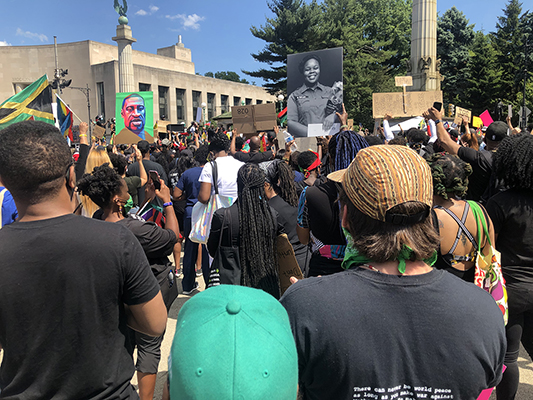
I’d be remiss not to first uplift the work of Mariame Kaba. She has been a crucial developer of abolitionist thought and practice, and her degree is in sociology. To speak of the work of sociologists who are specifically in institutions of higher education is one thing, but to hold firm the work of sociology by seeing it in practice is another. Kaba has been able to influence the trajectory of Black Lives Matter Chicago and so many contributing organizations to the Movement 4 Black Lives, including Black Youth Project 100.
Scholar-activists in the academy who greatly influence my perspective and work include Beth Richie, a founding member of INCITE!, Mimi Kim, founder of Creative Interventions, and Liat Ben-Moshe, who compels us to center disability and madness in our scholarship and activism. I think these three women are really at the forefront of intellectual innovation and engaged practice to end carceralism.
Outside of the US, I’m really inspired by the work of Vanessa Eileen Thompson in Germany and Sylvia Tamale in Uganda. Thompson explains the technologies of resistance utilized by activists and community organizers working to end anti-Black and anti-immigrant state violence in Germany and France. Tamale, a feminist activist and researcher, has committed decades of gender and sexual justice advocacy, while engaging various publics to transform cultures of violence.
S.M. Rodriguez <sm.rodriguez@hofstra.edu> and www.smrodriguez.com

